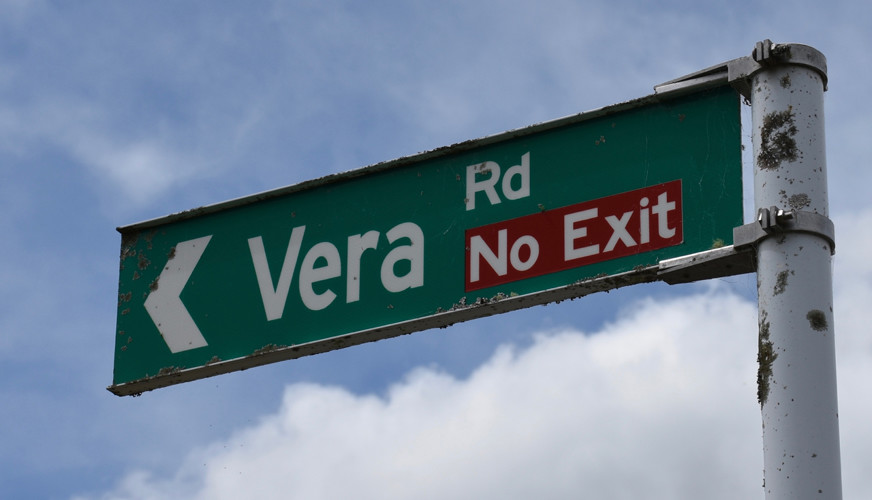 Vera Road sign (2021). Mike Gooch. Word on the Street image collection.
Vera Road sign (2021). Mike Gooch. Word on the Street image collection.
 Vera Road sign (2021). Mike Gooch. Word on the Street image collection.
Vera Road sign (2021). Mike Gooch. Word on the Street image collection.
There are not many roads in Taranaki named after local women, but whether Vera Road is named after an early female settler is lost to history. What is certain is that the road, about 3 kilometres north of Whangamomona off State Highway 43, was constructed in the late 1800s to provide access to farmland and played a short role in providing alternative access in and out of the valley via the Whanganui River.
The dream of early settlers was to bypass the terrible state of the main road into Whangamomona (known in newspaper reports at the time as “the mud road”) and provide a more reliable, pleasant and cheaper route for goods and passengers to access the inland area via the Whanganui and Tāngarāukau Rivers. For a time around 1900 the main road was almost impassable and it was difficult even to get food supplies into the district, causing freight costs to increase to the degree where the Government was forced to provide transport subsidies to settlers.
It was at this point that a plan was made to ease the transport issues by developing a river route. The Wanganui River Trust Board was responsible for clearing snags in the Tāngarāukau River up to where it meets Kōhuratahi Road, opening it up for steamers.
Vera Road played an important role in this plan as in its early days it was much longer than it is currently and extended all the way through to Putikituna Road, which at that time also reached as far as the Tāngarāukau River and the steamer landing stage known as the Putikituna landing.
Up until 1904 goods were frequently landed here, and occasionally further north where the river meets Kōhuratahi Road.
The new route and the district’s struggle with the state of its roads was so important it demanded a visit by the Prime Minister at the time, Hon. Richard Seddon. He arrived in Whangamomona by coach, where he enjoyed a banquet before settlers discussed the issues of the district with him including getting him to inspect some of the roads. The following day he travelled by horseback to the Tāngarāukau River where he travelled by boat back to Whanganui.
However the visit from the Prime Minister proved to be the pinnacle of the river route and Vera Road’s prominence. In 1904 a major flood in the district caused the Tāngarāukau River to again fill up with snags, caused mostly by the many logs felled during the deforestation of the land, and the project was abandoned.
Shortly after this, the decision was made by the Whangamomona County Council to shorten Vera Road to its current length of just over a kilometre as the road was considered too costly to maintain.
This story was originally published in the Taranaki Daily News.
Please do not reproduce these images without permission from Puke Ariki.
Contact us for more information or you can order images online here.